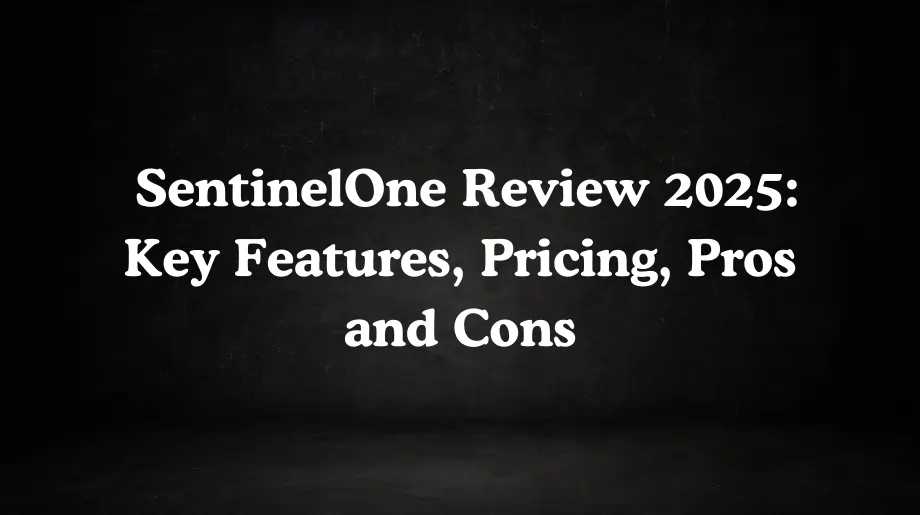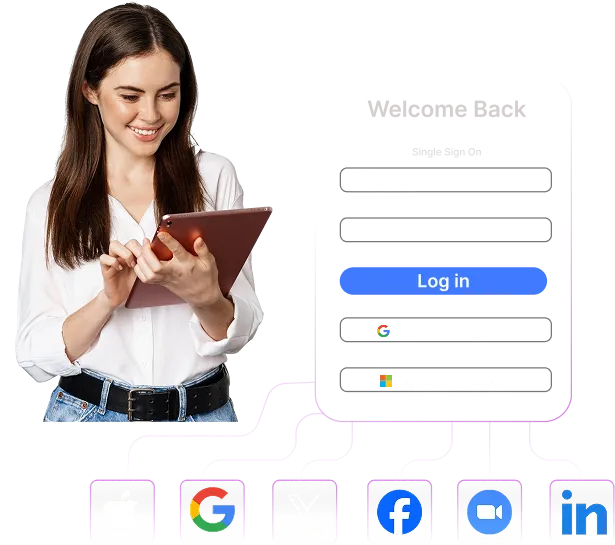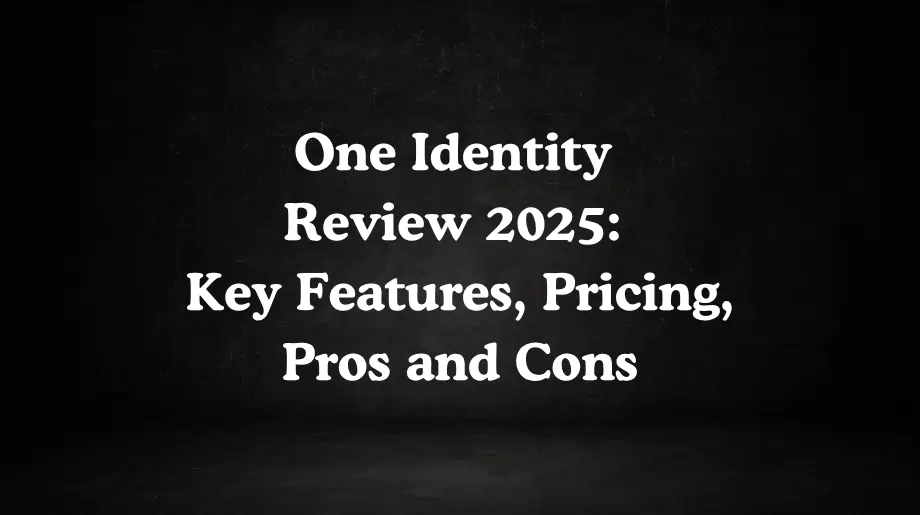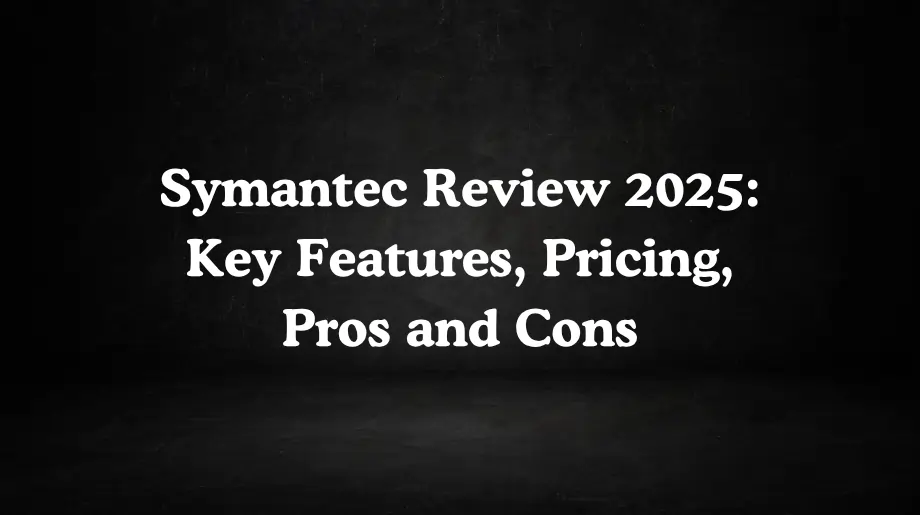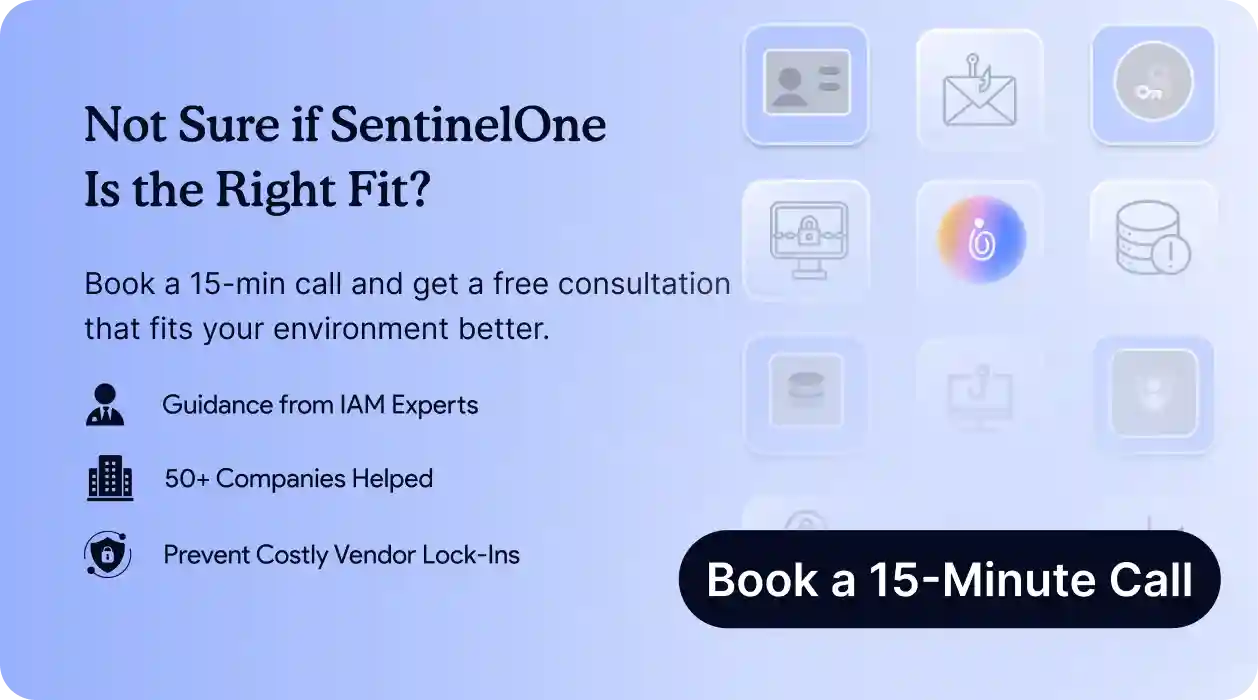
SentinelOne has become a leader in the AI-driven cybersecurity sector. It has earned consistent recognition for its advanced method of protecting modern businesses.
What is SentinelOne?
SentinelOne was founded in 2013 in Tel Aviv, Israel. Its founders were Tomer Weingarten, Almog Cohen, and Ehud Shamir. The software changed from an endpoint security specialist to a supplier of a complete SOC platform.
SentinelOne’s acquisitions include Attivo Networks for Identity Threat Detection and Response (ITDR). PingSafe was also acquired for Cloud Native Application Protection (CNAPP). This expansion shows a clear plan to supply a single, unified platform for all security operations.
Key Features of SentinelOne
The SentinelOne Singularity Platform is a broad portfolio of security products. It is built on a central AI engine. It is also managed from a unified console. The features are designed to give extensive protection. This protection works across the main pillars of a modern enterprise.
- Endpoint Protection Platform (EPP): This is the platform's foundation. It uses static AI to look into files before they run. It also uses behavioral AI to monitor processes in real-time. This helps to block malware and zero-day exploits.
- Endpoint Detection and Response (EDR): This part of the software uses ActiveEDR and Storyline technology. It gives deep visibility for threat hunting and incident response. It comes with tools like a remote shell and file fetch.
- Extended Detection & Response (XDR): The platform extends beyond the endpoint. It takes in data from third-party tools. It also uses its native identity and cloud modules. This gives a unified view of attacks that cross different domains.
- Cloud Native Application Protection Platform (CNAPP): This combined suite joins multiple cloud security functions. It includes Cloud Workload Protection (CWPP). This is for agent-based security on VMs and containers. It also has Cloud Security Posture Management (CSPM). This is for agentless scanning of cloud setups like AWS and Azure. This helps find out about misconfigurations.
- Identity Threat Detection & Response (ITDR): This module came from the Attivo Networks acquisition. It protects identity systems like Active Directory. It detects credential-based attacks, privilege misuse, and lateral movement. It also looks over the identity attack surface for misconfigurations and risky entitlements.
- AI-SIEM: This was built on the Scalyr acquisition. SentinelOne has a modern, cloud-native SIEM solution. It uses the Singularity Data Lake and Purple AI. This helps make threat detection and hunting more efficient. This presents a better alternative to old SIEMs.
- Managed Services: Some businesses need to add to their security teams. For them, SentinelOne has Vigilance MDR. This is a 24/7 managed detection and response service. It also has Watch Tower, which is a proactive managed threat hunting service.
SentinelOne Pricing
Figuring out the financial investment for SentinelOne is a complicated task. It goes beyond simple list prices. The company does show some transparency. It does this by publishing annual per-endpoint prices for its main tiers.
- For example, Singularity Core is $69.99. Singularity Control is $79.99. Singularity Complete is $179.99. Even with this information, these figures are only a starting point.
- In practice, real-world costs are often very different. This is due to SentinelOne's heavy reliance on a channel-driven sales model. This model involves a large ecosystem of resellers and Managed Service Providers (MSPs). These include companies like ConnectWise and Pax8.
- Median annual contract values are around $25,344. But they can range from as low as $9,022 to over $157,000. User forums back up this wide variance. Reported costs are all over the place.
- Prices can be as low as $2 or less per endpoint. This happens when it is bought through a high-volume distributor. On the other hand, prices can go as high as $16 per endpoint.

SentinelOne Usability and Interface
The daily operational experience is very important. It is a key factor when choosing a security product. SentinelOne gets high marks for its management console. Users interact with the platform in one place. They use a web-based console. This console can support multiple tenants.
- User reviews often say the console is easy to understand. They also say it is user-friendly. The clean interface makes it easy to manage. This means new analysts and administrators can learn it quickly.
- The design is based around a dashboard. This dashboard gives a quick summary of the company's security status. A clear navigation pane is also included. It gives simple access to different functions. These include Incidents, Visibility for threat hunting, and Sentinels for policy management.
- However, the platform's power comes with a trade-off. Marketing messages talk about full autonomy. But experienced users repeatedly point out that SentinelOne is not a solution you can just set up and forget about.
- In fact, a large amount of feedback highlights the need for careful, human-led fine-tuning. This need generally comes from two main issues. First, the powerful on-device agent can bring about performance issues. This can happen on servers and older workstations. This continues until precise exclusions are set up.
- Second, the sensitive AI engine can generate numerous false positives. This often happens with legitimate custom applications. As a result, this creates a workflow paradox. The AI is meant to cut down on the human workload. In reality, its use requires a skilled administrator.
SentinelOne's Key Features
1. ActiveEDR and Storyline
A main technological differentiator for SentinelOne is its ActiveEDR technology. This technology embeds a powerful AI decision-making engine. It is placed directly onto the endpoint agent. This unique system design allows the agent to find and fix threats by itself in real-time.
- It can do this without needing a constant connection to the cloud. This offline capability is a significant advantage. It is useful for protecting remote devices with spotty connectivity. It is also good for securing air-gapped networks. The on-device agent can put a stop to malicious processes.
- It can quarantine files. It can also isolate the endpoint from the network at machine speed. This helps to prevent lateral movement. Paired with this is the patented Storyline technology. It automatically connects all related events. It puts them into a single, logical visual timeline.
- For instance, it tracks process creations and file modifications. Storyline™ reveals the root cause and full progression of an attack. It does this by automatically contextualizing thousands of data points. This greatly cuts down on the manual work for security analysts. It also improves response times.
2. Identity Threat Detection & Response (ITDR)
SentinelOne is not an Identity and Access Management (IAM) supplier. It does not issue identities. It does not act as an authentication authority. Instead, its purpose is to protect the existing identity system from compromise. This area is known as ITDR. The foundation of these capabilities came from the Attivo Networks acquisition.
- It is designed to stop attackers who have already gotten past perimeter defenses. These attackers are using stolen credentials. It uses a two-part method. First, its Posture Management module continuously scans Active Directory and Entra ID.
- It looks for misconfigurations, excessive privileges, and other weaknesses. It then gives actionable guidance to fix them. Second, its Live Attack Detection feature is designed to spot active attacks in real-time.
- It has specific detections for known techniques. These include Golden Ticket forgery, Pass-the-Hash, and DCShadow attacks.
3. Deception Technology
A particularly advanced feature set is within the Singularity Identity module. It is the use of deception technology. This technology actively works against and misdirects attackers. The platform can actively cloak real, high-value assets.
- These can include privileged user credentials or sensitive files. This makes them invisible to an unauthorized process. It also hides them from an attacker trying to carry out reconnaissance.
- The platform plants deceptive lures in place of these hidden assets. These can be things like fake credentials or bogus network shares. An adversary will trigger a high-fidelity alert if they interact with these decoys.
- This action immediately reveals their presence and intent. This technique misdirects attackers down dead-end paths. It significantly slows them down. It also makes their reconnaissance efforts useless. This is particularly effective in ransomware scenarios.

SentinelOne Reviews and Ratings
Market and user-based assessments consistently place SentinelOne in the top tier of cybersecurity solutions.
- Gartner has positioned the company as a Leader for Endpoint Protection Platforms for five years in a row. This shows its sustained innovation and vision. This is strongly backed up by user reviews on Gartner Peer Insights.
- There, the Singularity Endpoint platform holds an overall rating of 4.7 out of 5 stars. This is from over 2,800 verified reviews. Users frequently praise its effective threat handling.
They also like the increased visibility it supplies. - Likewise, on the peer-to-peer review site G2, the Singularity Platform holds a 4.7-star rating. The most cited pros are its ease of use and AI-driven detection. The valuable ransomware rollback feature is also mentioned often.
- Unfiltered discussions on platforms like Reddit show a similar view. In those forums, the product is often described as fantastic. Users also say it is more sophisticated than some competitors.
- However, these forums also consistently highlight the main cons. Cost is the most frequently mentioned downside. Many users call the solution pricey.
- The strong need for ongoing fine-tuning to manage performance and false positives is a major operational concern.
Overall View of SentinelOne
SentinelOne is now a supplier of a wide-ranging cybersecurity platform. Its central technologies are the autonomous AI agent and the intuitive Storyline™ investigation feature. These form a powerful foundation for any modern security operation.
SentinelOne is particularly suited for those looking to consolidate their security tools. It is also good for businesses wanting to automate responses and lower their total cost of ownership.
However, this power and sophistication bring complexity. The platform demands skilled administration. This is needed to properly tune its sensitive engines. Administrators must also manage false positives.
They need to balance security effectiveness with operational performance. Furthermore, its complicated, channel-driven pricing model requires a well-informed and competitive procurement process.
The Best SentinelOne Alternative: Infisign
SentinelOne is a leader in AI-driven endpoint protection. A complete security strategy also needs strong identity and access management (IAM). Businesses may want to strengthen security beyond the endpoint. Infisign is a noteworthy choice for them. This is especially true if they want a solution with a clear cost structure.
As an IAM software, Infisign is an enterprise solution that is flexible. Its IAM Suite improves the administration of workforce identities. Its UniFed tool is made for bettering user accessibility.
Infisign also has a large collection of over 6000 APIs and SDKs. These help make the connection to your company's full technology stack quick and uncomplicated.
Infisign addresses important security needs in the following ways:
- AI Access Assist: You can automate user lifecycle management across your main collaboration tools. Infisign's AI abilities speed up the process of adding and removing users. This makes certain that consistent access control is maintained for applications like Slack and Microsoft Teams.
- Transparent Pricing: SentinelOne has opaque and variable costs. Infisign's pricing is different. It is available at a more economical price. All sophisticated authentication methods are included in the starting cost. This means there are no unforeseen or extra charges for important IAM features.
- Brute Force Protection: You can strengthen security against attacks that use stolen credentials and brute-force attempts. Infisign uses multi-factor authentication (MFA) with different verification methods. These methods include OTPs, magic links, and biometrics. This applies strong authentication and avoids user difficulty.
- Adaptive MFA With Biometric Authentication: You can use risk-based authentication with dynamic MFA policies. These policies check factors like device security status, IP address, and location. The system can also apply the right authentication measures, such as biometric checks using fingerprint or iris scans.
- Works on ALL Ecosystems + Legacy Software: Infisign gives you the ability to regulate access to certain applications. This includes applications that lack SSO support, as well as older and web-based applications. This decreases the likelihood of shadow IT inside your technical setup. It also extends modern security to all parts of your system.
- Attribute-Based Access Control: You can set up granular control of access rights. These rights are based on specific user and device attributes. The system checks dynamic factors like location, device health, and user role. This makes certain that users only have access to the resources they explicitly need. This follows the principle of least privilege.
- Conditional Access + Network Access Gateways: You can apply zero-trust principles to your older, locally hosted applications. Infisign's network access gateway permits safe, cloud-based entry to resources that are hosted on-premises. This connects older systems with modern conditional access security policies.
Want more details on how Infisign performs better than SentinelOne? Reach out for a free demo call with our team of security experts.

FAQs about SentinelOne
What is SentinelOne used for?
SentinelOne is mainly used for AI-powered threat protection across a business. Its primary use case is endpoint security. This includes EPP and EDR. It is designed to prevent, find, and respond to a wide range of threats by itself. These threats include common malware, zero-day exploits, and ransomware. The platform has also expanded. It now secures cloud workloads and identity systems as well.
Is SentinelOne an EDR or antivirus?
SentinelOne is an Endpoint Detection and Response (EDR) platform. It includes next-generation antivirus (NGAV) capabilities as part of its broader security functions. This allows it to analyze system behaviors to stop threats, rather than just relying on known virus signatures
Is SentinelOne a SIEM?
No, SentinelOne is not a Security Information and Event Management (SIEM) tool. Its main purpose is to actively protect endpoints by detecting and responding to threats. However, it can forward its detailed security data to a SIEM for centralized analysis.
Is SentinelOne better than CrowdStrike?
SentinelOne and CrowdStrike are both top-tier competitors in the endpoint security field. Deciding which is better depends on a company's specific requirements, budget, and technical environment. Each platform has unique strengths in areas like AI-driven detection and managed service offerings that may suit different business needs.
Who uses SentinelOne?
SentinelOne is used by businesses of all sizes. These businesses are in all major verticals. These industries include finance, healthcare, government, and manufacturing. Its user base ranges from small businesses to large, global enterprises. The small businesses often get the service through an MSP. The larger companies may require a broad platform for their security operations center (SOC).
Is SentinelOne expensive?
SentinelOne is generally seen as a premium and pricey solution. Its list prices are published. However, real-world costs are highly variable. These costs depend on negotiation, volume, and the sales channel used. Even so, it can result in a favorable Total Cost of Ownership (TCO). This is achieved by consolidating multiple old security tools. It also improves operational efficiency for security teams.





